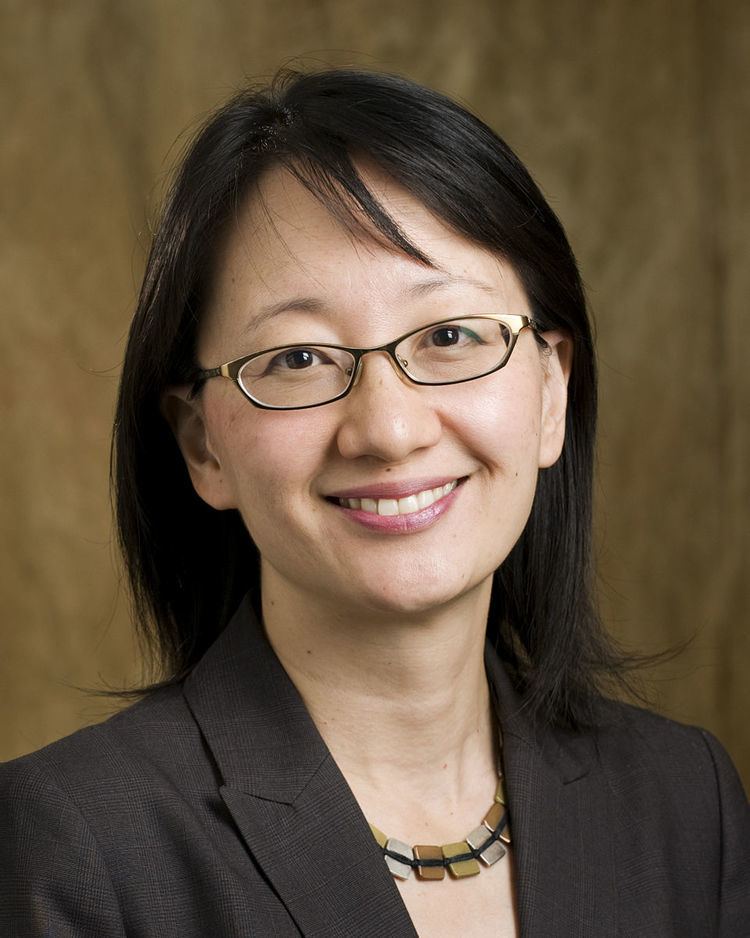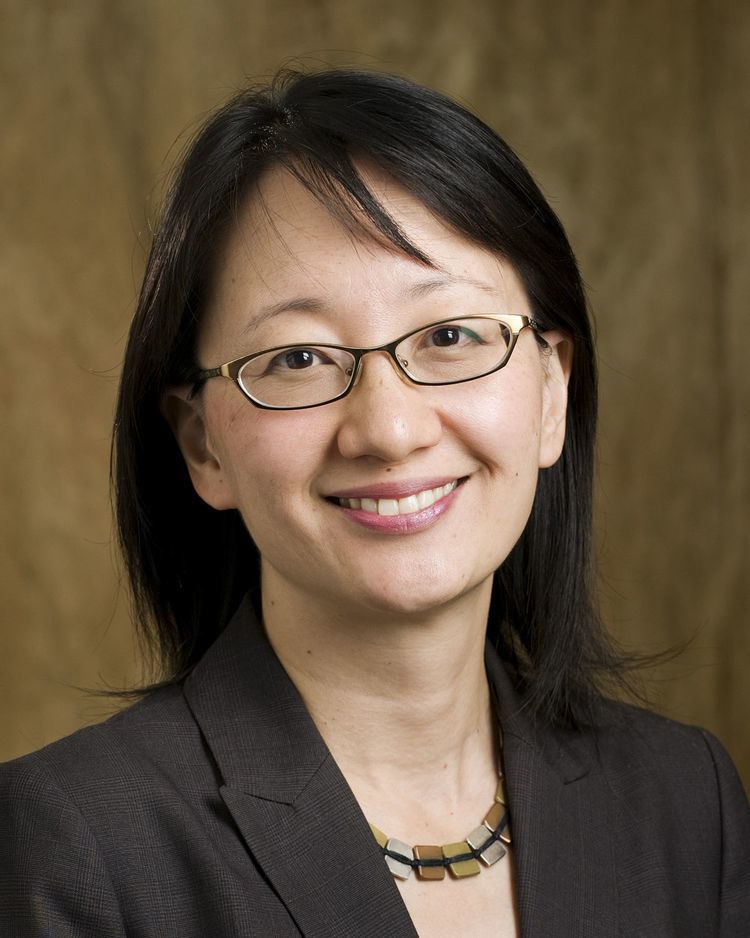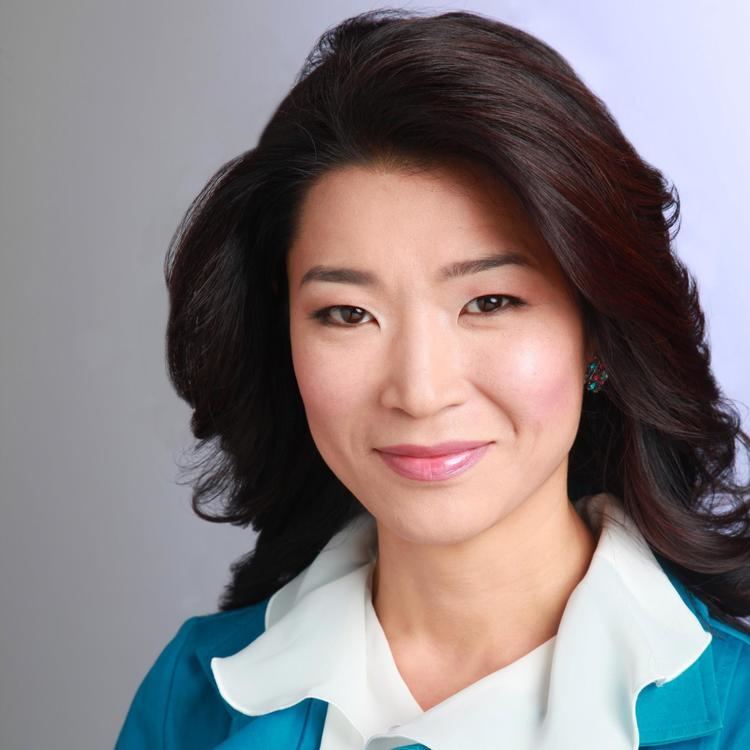Nationality American | Name Vivian Lee | |
 | ||
Fields RadiologyHealth AdministrationEducationAuthorResearch Alma mater Harvard Medical SchoolUniversity of OxfordDuke UniversityHarvard-Radcliffe CollegeNYU Stern School of Business Known for Author of Cardiovascular MRI: Physical Principles to Practical ProtocolsCEO of University of Utah Health Care Notable awards Rhodes ScholarshipChang-Lin Tien Education Leadership awardNational Academy of Medicine | ||
Parkshow 2015 vivian lee
Vivian S. Lee (born 1966) is an American radiologist. Lee is a Rhodes Scholar, has published more than 150 peer-reviewed studies, and is the author of Cardiovascular MRI: Physical Principles to Practical Protocols. Lee is a recognized leader in academic medicine and health care, is a member of the National Academy of Medicine, and serves on the National Institutes of Health Council of Councils.
Contents
- Parkshow 2015 vivian lee
- Vivian lee the melody of innovation
- Education and research
- Academic experience
- Work at the University of Utah
- Utah Genome Project ethical questions
- Public dispute over control of Huntsman Cancer Institute
- Awards and recognition
- Publications
- References

She is the former CEO of University of Utah Health Care in Salt Lake City former Dean of the University of Utah School of Medicine, and former senior vice president for health sciences of University of Utah. After six years at the University of Utah, Lee resigned her positions in April 2017.

She is married to international legal scholar Benedict Kingsbury.
Vivian lee the melody of innovation
Education and research
Lee graduated from Harvard-Radcliffe College magna cum laude in 1986 before receiving a Rhodes Scholarship to study at University of Oxford where she received a doctorate in medical engineering. She then earned an M.D. with honors from Harvard Medical School and subsequently completed a residency in diagnostic radiology at Duke University and a fellowship in MRI at NYU Medical Center.
In 2006, she completed a Master of Business Administration degree at NYU's Stern School of Business. Lee is currently the principal investigator for two NIH R01 grants. Her research focuses on development of quantitative functional body and cardiovascular MRI.
Academic experience
Before joining the University of Utah, Lee served as Senior Vice President and Chief Scientific Officer of New York University Medical Center. As CEO of University of Utah Health Care, Lee oversaw an academic health sciences complex that includes five major schools (School of Medicine, School of Dentistry, and colleges of Nursing, Pharmacy and Health) and a health care system comprising four hospitals, dozens of clinical and research specialty centers, a network of 10 Salt Lake City-area health centers, a health plan, and over 1,000 board-certified physicians serving patients from six mountain west states. Under her leadership, the University of Utah established a new School of Dentistry, the first new academic dental school in the nation in over 25 years.
Work at the University of Utah
Lee came to the University of Utah in July 2011 and focused on increased efficiency in health care, translational research that can change medicine, and innovation to spur new technology and medical breakthroughs. During her tenure, the University of Utah Health Sciences Center budget grew to $3.3 billion and now serves an extensive regional affiliation network. The following additional projects were implemented during her tenure:
Utah Genome Project ethical questions
In September 2014, Lee accepted a controversial $12 million donation from billionaire entrepreneur Patrick Soon-Shiong for the "Chan Soon-Shiong Heritage 1K Project" under the umbrella of Lee's signature Utah Genome Project. The contract governing the tax-deductible gift led to the University paying $10 million of the donation to NantHealth, a company founded by Soon-Shiong, for genetic testing services. On April 25, 2017, Greg Hughes, Speaker of the Utah House of Representatives, stated that the Utah Legislature was considering an investigation into the questionable donation. Stat News reported on May 3, 2017, that the Utah legislative investigation was in its early stages, reviewing documents and conducting interviews about the contract with NantHealth and the donation from Soon-Shiong.
Public dispute over control of Huntsman Cancer Institute
Lee became embroiled in a public controversy for firing Huntsman Cancer Institute CEO, Dr. Mary Beckerle, on April 17, 2017. Lee was publicly criticized for the move by HCI's founder and prime benefactor, billionaire philanthropist Jon Huntsman, Sr. The decision prompted public protests by University of Utah faculty and staff, including an online petition calling for University leadership to reverse the decision and reinstate Beckerle. Jon Huntsman, Sr., publicly called for Lee and University President David W. Pershing to be fired from their leadership positions on April 21, 2017, questioning their ethics and predicting that the governor and state legislature would become involved to ensure their removal. On April 22, 2017, the Editorial Board of the Salt Lake Tribune (a newspaper owned by a member of the Huntsman family) called for Lee's removal as the "only remedy in this case." The University Board of Trustees met with Pershing and Lee on April 25, 2017. Within hours after the meeting, Pershing released a written statement announcing that Beckerle was immediately resuming her service as CEO and Director of Huntsman Cancer Institute and would report directly to the President of the University. Pershing's announcement signaled that Lee would no longer oversee the Huntsman Cancer Institute, raising questions about the future direction of the University Health system. Huntsman stated that a planned donation of $250M dollars would have been withheld unless Dr Lee's decision was reversed and Dr. Berkerle reinstated. He also called Dr Lee's action a "terribly, terribly unethical act." On 28 April, Lee announced via email that, effective the same day, she was stepping down as the university's senior vice president for health sciences, dean of the medical school, and CEO of the healthcare system. She retains her appointment as a tenured professor of radiology. As part of her contract, Lee retained her salary of more than $1 million for one year after resigning her administrative position. After her resignation, local reporters at the Deseret News discovered more details about the dispute over finances with Huntsman Cancer Institute.
Awards and recognition
In her academic career Lee was awarded a Rhodes Scholarship to study at Oxford University. Lee was named an Outstanding Teacher by the International Society for Magnetic Resonance in Medicine in 2005, 2011 and 2012. She also received the Chang-Lin Tien Leadership award in 2009. Currently, she is on the board of directors at Zions Bank, Merrimack Pharmaceuticals, and the American Association of Rhodes Scholars. She also is part of the Journal of the American Medical Association Journal Oversight Committee, the National Advisory Committee for the Health Care Delivery System Reform Program of The Commonwealth Fund, the Scientific Advisory Board of Massachusetts General Hospital, the Council of Councils of the National Institutes of Health, and the Administrative Board of the Council of Deans for the Association of American Medical Colleges. Elected to the National Academy of Medicine in October 2015.
